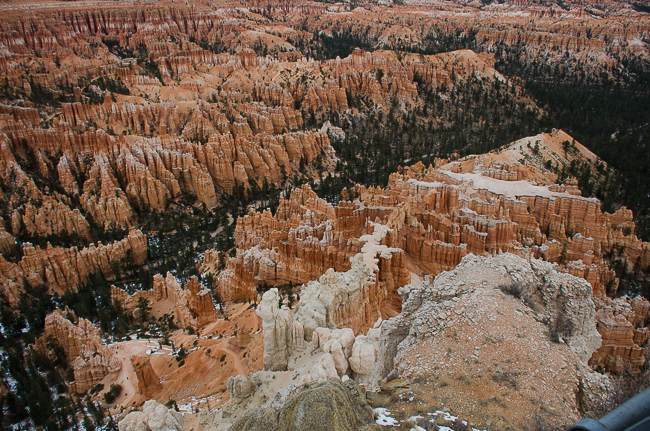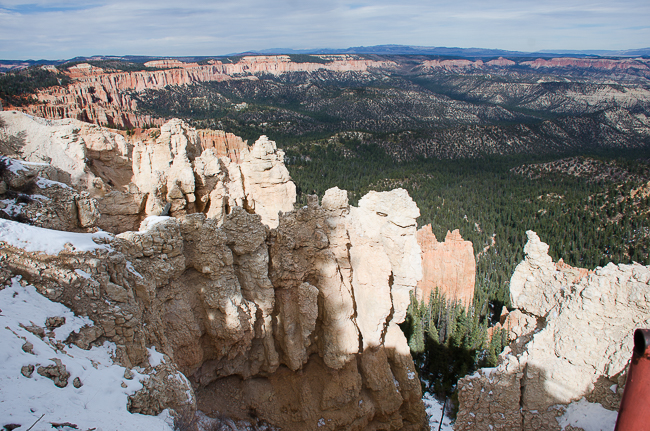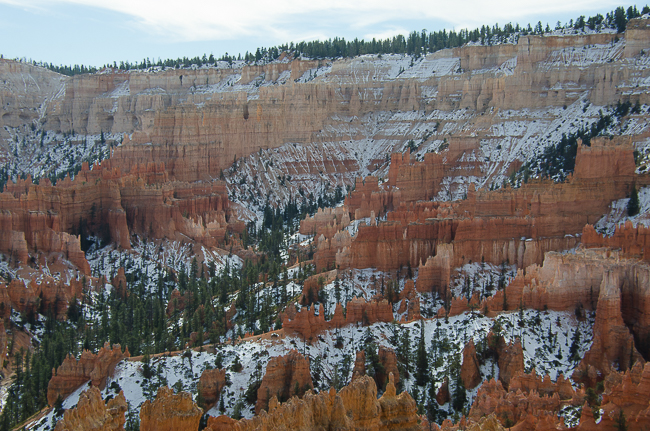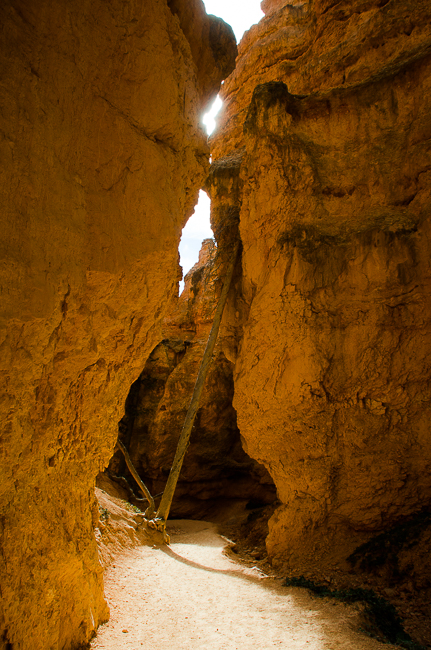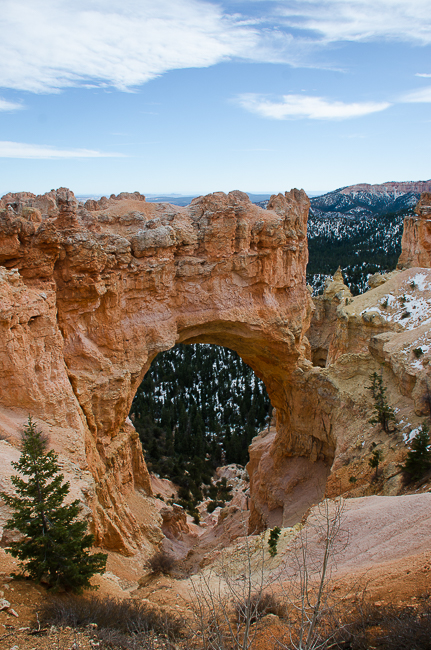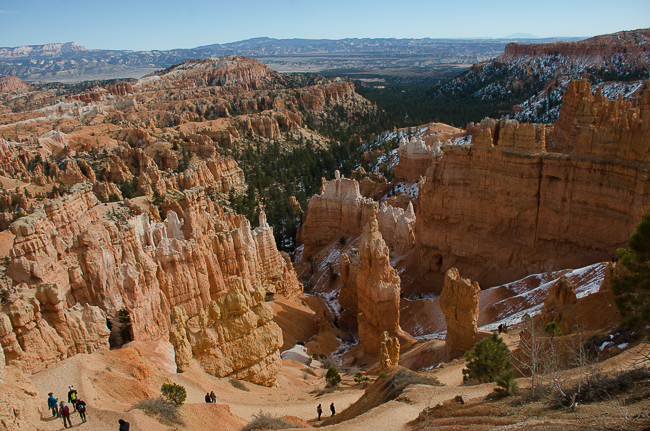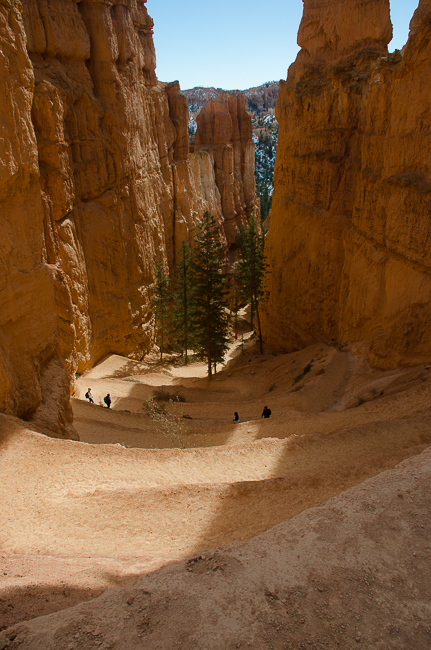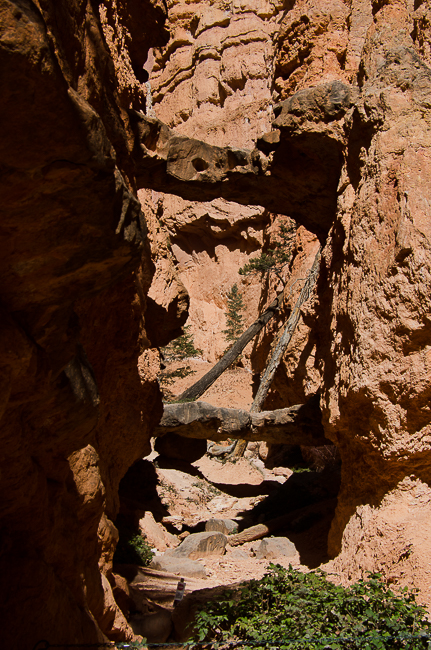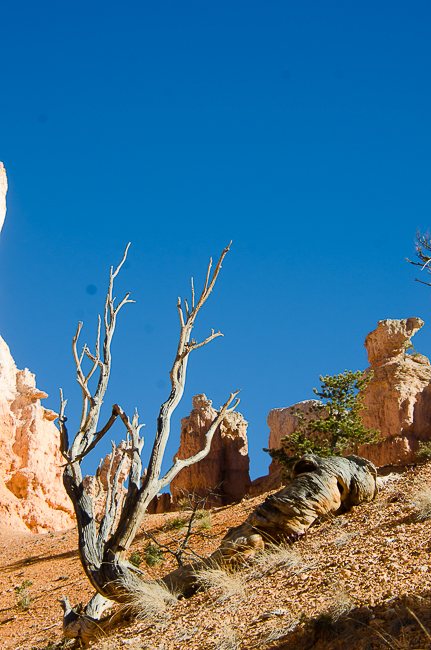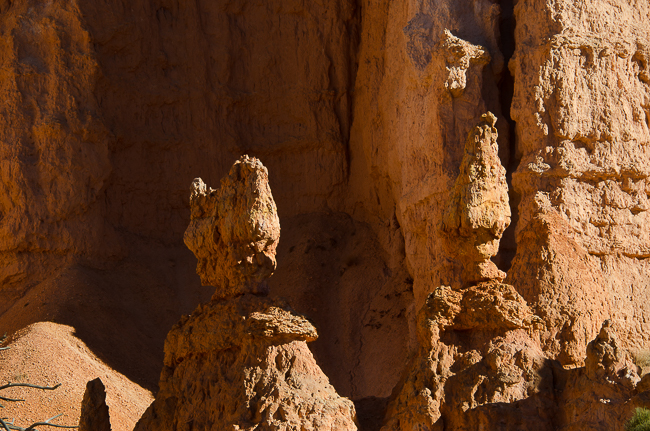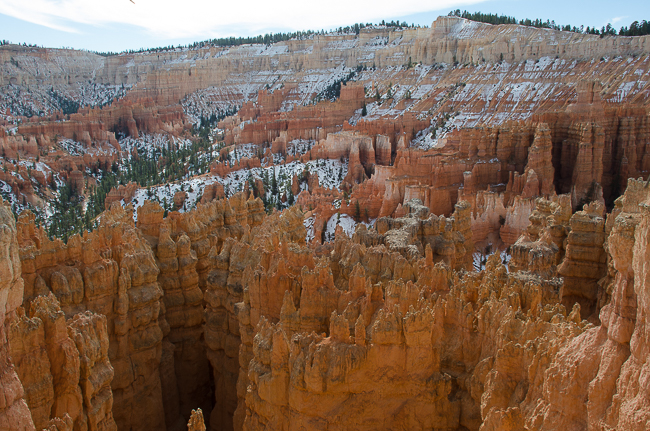November 17, 2020
Hoodoos of Bryce Canyon
Weathering and erosion play only a minor role in the development of hoodoos. These are formed more by the freeze/thaw process than anything else. As the water flows into cracks and re-freezes, it expands and cracks the rock around it, this is called frost-wedging, and that is how, after millions of years you get hoodoos.
It is difficult to determine the actual makeup of each color, you really do need to be a geologist, and even with a great book, we were both very unsure of what we were seeing. It is simply breathtaking, no matter how it was formed or what the different rocks are called.
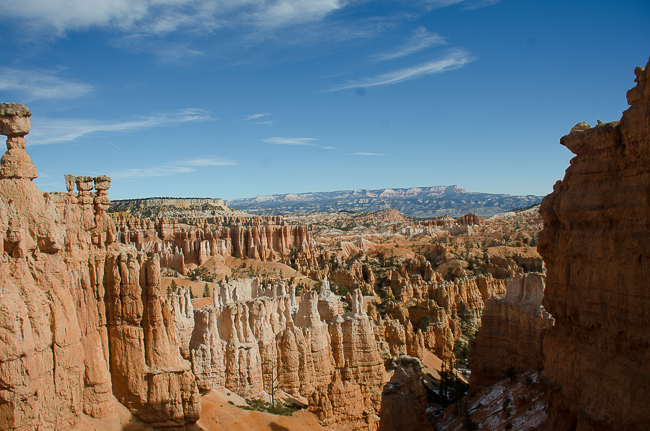
To highly simplify the process of how hoodoos are made you begin with the thin walls of the rocks called fins. These are not yet hoodoos.
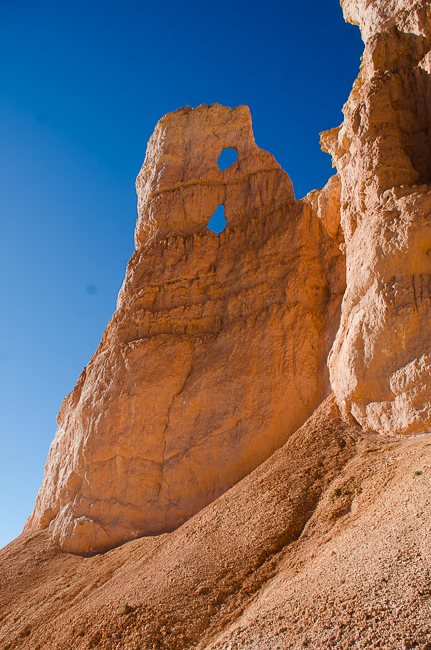
Frost-wedging enlarges the cracks in the fins creating holes or windows. They are still not hoodoos.
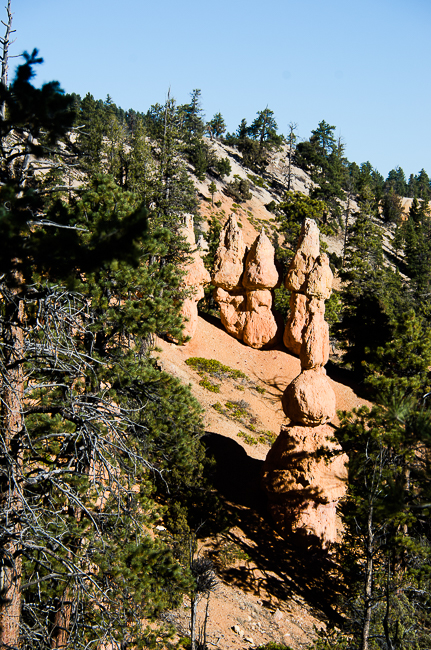
As the windows grow their tops eventually collapse, leaving a column. Rain continues to dissolve and sculpt these limestone/sandstone pillars into spires. Now you have a hoodoo.
As you can see there is snow on the ground. The elevation of Bryce is between 7,600 and 9,100 feet.
Hoodoo comes from the Southern Paiute word Ooh doo. It means being afraid, or showing fear. It is actually pronounced uuudooooooooooooooo
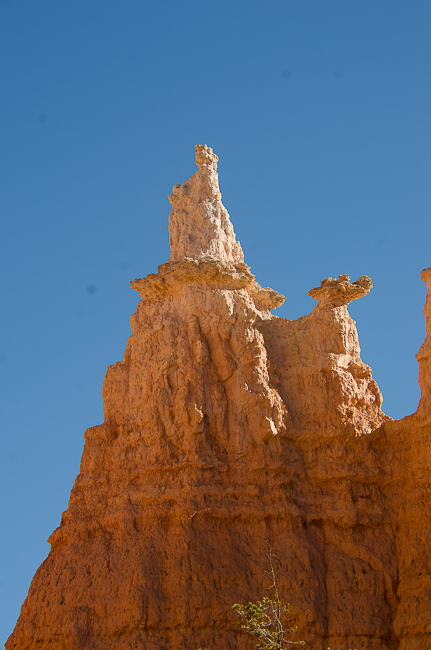
Queen Victoria, in the part of the canyon called Queens Canyon, was named for its likeness to a statue in London, England.
Here are some amazing shots of our day.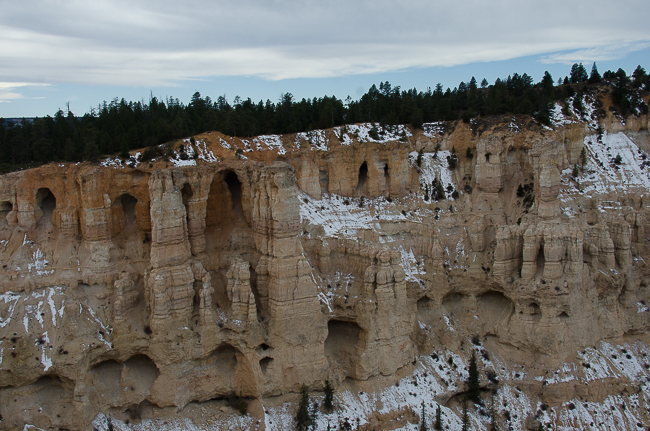
*
*
*
